
A Story of Mistletoe
(This is not all about kissing under the mistletoe, although we will talk about that part)
Exploring how Mistletoe is said to have
Dropped from the Heavens, and Landed in the Trees
Born and Grown on Wind, steadied by Oak. Leaning into the strength and steadiness of Oak,
sheltered and nourished by Oak.
Mistletoe grows in the high reaches of Oak and other hardwood Trees.
A seed nourished not in the Earth,
yet in those high branches of Tree,
suspended between Earth and Sky.
Apprenticing ourselves to Mistletoe may assist us on our human journey.
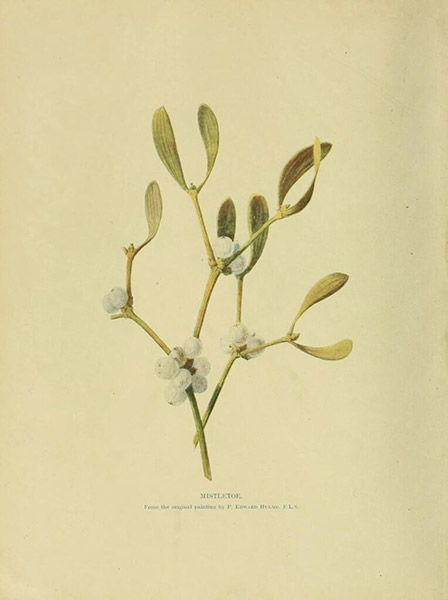
Have you ever felt and sensed as if you were dropped from the heavens and didn’t make it quite all the way onto Planet Earth? (I have and I bet some if not many of my readers feel this way, at least sometimes.)
It’s like my feet just aren’t quite touching, like grounding is really hard to do.
“How do I do this?”, you (like I) might have wondered. “I’m walking around but my energy is somewhere else, higher up, maybe even above my head.”
And it feels better up there. That’s actually where you, where your consciousness, lives and is at home. Especially for sensitive ones.
It’s wide view, a high view.
And it’s also sometimes a hard place to live, what with the push of Wind, the discordant back and forth of Storm, the relentlessness of whatever extreme the day or the night brings way up there in a different home environment, And the pull to be grounded and rooted and strong.
When you start paying attention to how your own energy field operates, how your spark of aliveness manifests itself, you might observe something about this energetic reality.
How do we connect more deeply to this dear planet Earth? Isn’t that the work of becoming human?
It IS a lot of work, being human, becoming human. Consider all the stress, trauma, loss, pain and simple fatigue that the work of being human brings to each of us.
Consider making friends with Mistletoe, freely found at this time of year on thresholds and at parties, where hopeful suitors hope to stand with the object of their affections. Mistletoe is not a common medicinal plant, but its common presence in winter celebrations brings us into relationship with Mistletoe.
(Most plants I share about here are generally safe for home use and considered tonic, food-like medicine. Please note that Mistletoe berries are toxic and the plant has potentially very strong actions; as a physical medicine, Mistletoe is best administered under the guidance of an herbalist.)
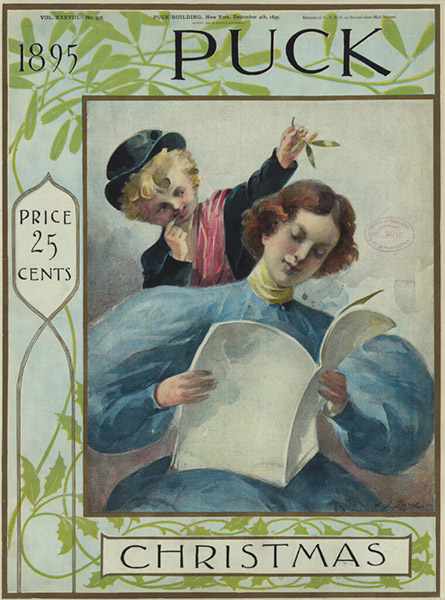
History and Lore
Back to the well-known presence of Mistletoe in our winter celebrations. How did that custom come about?
“Shakespeare calls it ‘the baleful Mistletoe,’ an allusion to the Scandinavian legend that Balder, the god of Peace, was slain with an arrow made of Mistletoe. He was restored to life at the request of the other gods and goddesses, and Mistletoe was afterwards given into the keeping of the goddess of Love, and it was ordained that everyone who passed under it should receive a kiss, to show that the branch had become an emblem of love, and not of hate.” (M Grieve, A Modern Herbal)
Mistletoes figure in legends, customs and medicines. Ancient Romans may have believed that mistletoe was dropped from the heavens and landed in the trees where it grew: Aeneas, the father of the Roman people according to Virgil, sought the ‘Golden Bough’ when he chose to visit the Underworld. This golden bough, a branch of Mistletoe with golden leaves, provided him with protection and magical powers on his journey and a safe return to life in this realm.
According to legend, and as beautifully told to us by Maude Grieve, Mistletoe was held in great reverence by the Druids, the great sages of the ancient Celtic cultures, who called this plant “All-Heal”. She writes: They went forth clad in white robes to search for the sacred plant, and when it was discovered, one of the Druids ascended the tree and gathered it with great ceremony, separating it from the Oak with a golden knife. The Mistletoe was always cut at a particular age of the moon, at the beginning of the year, and it was only sought for when the Druids declared they had visions directing them to seek it.
The Druids held that the Mistletoe protected its possessor from all evil, and that the Oaks on which it was seen growing were to be respected because of the wonderful cures which the priests were able to effect with it. They sent round their attendant youth with branches of the Mistletoe to announce the entrance of the new year. It is probable that the custom of including it in the decoration of our homes at Christmas, giving it a special place of honour, is a survival of this old custom.
In our age and time, the American Mistletoe thrives in the mountainous Appalachian landscape of North America. The glossy green leaves and white berries are an easily recognizable feature during the winter months: Mistletoe stands out against the otherwise bare branches of the hardwood deciduous trees like Oaks, Maples, and Hickories, their pendant bushes growing high in the treetops where it is often hard to reach.
In Appalachia, Mistletoe is mostly found in the higher branches of trees, where it is thus hard to reach. Though it attaches itself to grow and draw nutrients from its host, it also grows by photosynthesis, and thus rarely harms the trees.For many in Appalachia, the hunt for Mistletoe is part of the winter routine. People who know the local forests can spot the plant growing high in the trees, often requiring a long pole, a climb high up into the tree, or a shotgun aimed just right in order to collect it.
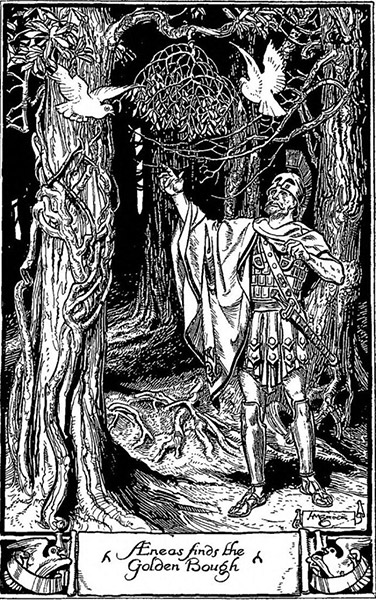
A Little Botany and Biology
Mistletoe is always produced by seed yet does not grow in the Earth. Give that a ponder for a minute or two. An evergreen hemiparasitic plant, it grows on the branches of trees, where it forms pendent bushes, 2 to 5 feet in diameter.
Since Mistletoe has chlorophyll, a necessity for photosynthesis, they are able to get some of their energy from the sun. So, Mistletoe is not completely reliant on another host for its nourishment, and does not receive nourishment from the soil or the decayed bark. Mistletoe siphons off some of their host tree’s water and nutrients for their own use and energy production. But usually not too much, not to a harmful effect. After all, Mistletoe’s life is tied to the life of its host tree. It usually does not die until and unless its host tree dies.
Mistletoes used to be grouped into one plant family but now are distributed in four plant families in the order Santalales. Two of these families, Viscaceae and Loranthaceae, receive the most attention. There are 8 genera and approximately 450 species worldwide in the family Viscaceae, mostly in the tropics and subtropics. The brittle stems of these herbaceous or shrubby aerial parasites are evergreen, and usually with swollen and articulated nodes. Most species have simple, opposite, evergreen leaves but a few have leaves reduced to scales. All have small, inconspicuous flowers. There are 60-70 species of Viscum, mainly in the warm regions of the Old World. The Oak Mistletoe that was venerated by the Celts and Germans is European Mistletoe (Viscum album) which produces yellow flowers and white sticky berries. European Mistletoe was introduced in California in the 1900s and has become naturalized there. (Univ of Wisconsin-Madison)
And despite their parasitism, Mistletoes may well be one of the Robin Hoods of plants. ** They provide food, shelter and hunting grounds for animals from birds to butterflies to mammals — even the occasional fish. Fallen Mistletoe leaves release nutrients into the forest floor that would otherwise remain locked within trees, and this generosity ripples through the food chain.
Squirrels and many birds such as Flycatchers, Bluebirds, Robins, Grouse, Mourning Doves, Evening Grosbeaks and Pigeons eat the Mistletoe berries. These creatures may make their homes nestled within the bushy growth of mistletoe between the tree branches. Chipmunks, deer and elk also eat the leaves and berries. Even a species of moth, Celypha woodiana, known as the “marble mistletoe moth” lays its eggs on European Mistletoe. In North America, the Great Purple Hairstreak butterfly feeds on American mistletoe and lays its eggs on the plant which is the main food source for the newly hatched caterpillars. (WV Highlands Conservancy article.)
Most Mistletoe species rely on birds and animals who eat the seeds to propagate the growth cycle. Dwarf Mistletoe, however, disperses seeds on its own by exploding (!!). As its berries grow, they fill with water until the increasing pressure causes the berries to burst. This sends the seeds flying through the air at speeds up to 60 mph to land on trees 15-40 feet away.
Back in 2001, Watson made the case in an article in the Annual Review of Ecology and Systematics that Mistletoes are keystone species on which much of the life surrounding them depends. Evidence for this role has since grown. A study of Mistletoes in the savannah of Zimbabwe, for example, found that mistletoe leaf litter pumps additional nitrogen, phosphorus and other nutrients into the soil, influencing the diversity of grasses.
And in one experiment, Watson and colleagues removed some 5,000 Mistletoe plants from 20 sites in the Billabong Creek watershed in Australia. Those areas ended up with 25 percent fewer birds, compared with 20 neighboring areas whose mistletoes were left intact. ** (BTW Sometimes scientific research really bums me out and I feel sad. Why do we do things like this? Is this really necessary?)
Anyway…….Just as the tradition of hanging Mistletoe brings people together, Mistletoe brings together many creatures and plants in its ecosystem.
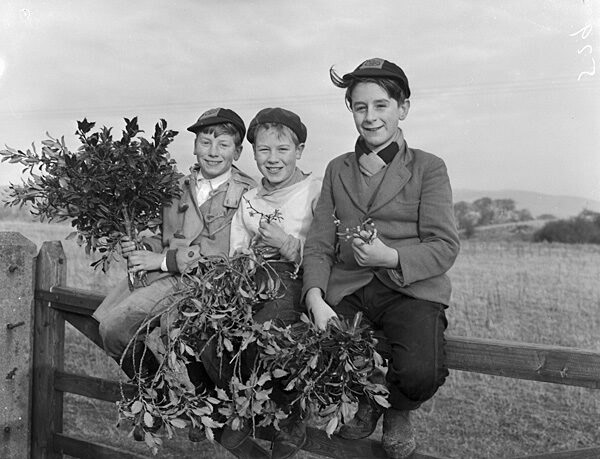
Mistletoe Medicine
“Mistletoe is just a super cool plant.” herbalist jim mcdonald
It is the European variety of Mistletoe — Viscum album — that has been revered by herbalists through the centuries. Mistletoe has many medicinal uses and it has been used for many hundreds of years. It is also one of the most well studied medicinal plants for the treatment of cancer in Europe today where it is available as an injectable prescription extract for patients with cancer.
Energetically, mistletoe is considered warming and astringent. Mistletoe as a tincture has a slightly sweet taste followed by a stronger bitterness.
According to Ms. Grieve in A Modern Herbal, historical applications focused on the nervous system. “Convulsions, neuralgia, hysteria, and complaints arising from a weakened and disordered state of the nervous system,” were the most common uses, but Mistletoe was also sometimes employed in urinary disorders and heart disease. Also applied as a heart tonic for some cases of typhoid fever in place of foxglove, Mistletoe is said to have strengthened the force of the heartbeat and increased heart rate. Ms Grieve also mentions that a formula of mistletoe, valerian, and vervain was given for “all kinds of nervous complaints.”
Richard Hool in Health from Wild British Herbs (1918)says: Our only British species of this order is the common Mistletoe, growing on many kinds of trees, but particularly on the apple, and others botanically allied to it, such as the pear, service tree, and hawthorn; sometimes on sycamores, plain trees, limes, poplars, firs, and oak trees….Its properties are nervine, tonic, diuretic, anti-spasmodic, slightly narcotic, sedative, astringent, and anti-scorbutic. It is employed in convulsions, chorea, delirium, hysteria, neuralgia, nervous debility, urinary disorders, heart disease, and many other complaints arising from a weakened or disordered state of the nervous system.
Matthew Wood discusses mistletoe in his book ‘The Earthwise Herbal’ in which he writes ‘mistletoe opens up circulation to areas that have been cut off from adequate blood supply by tension. It reduces cardiovascular tension and blood pressure, while bringing in new blood, blood sugar, and healing to areas long cut off, tensed up, weakened, or damaged’.
Mistletoe is also referenced by Wood as a nervine herb that promotes inward feeling, contemplation and reflection. It has a number of actions that directly affect the nervous system. It is also thought of as an antispasmodic and autonomic nervous system (ANS) balancer. The ANS regulates automatic physiological processes such as heart rate, blood pressure, respiration and digestion as well as stress responses.
Mistletoe has multiple, well-referenced applications for conditions which are directly associated with the ANS, such as high blood pressure, arrhythmia, insomnia, nervousness, anxiety, depression and nervous tension in the abdominal organs. Mistletoe is understood to reduce overactivity in the parasympathetic nervous system. Stableford adds in his book, “The Handbook of Constitutional and Energetic Herbal Medicine” that mistletoe is specific for releasing emotional constraint. (This information comes from the website herbalreality.com, founded and run by European herbal medicine practitioners. All sources referenced can be found in the monograph on Mistletoe.)
One of my herbal teachers jim mcdonald has this to say on Mistletoe:
“And I’ve just liked the plant because it’s … I guess it’s a parasite and if you’re a tree that mistletoe’s growing on, you might not think is the greatest thing in the world. But I’ve had just this attraction to it. It has a really unique and interesting flavor that I find compelling.”
A friend that I have in the UK would occasionally send me mistletoe and they would be like, “Here’s mistletoe that was growing on apple and here’s mistletoe that was growing on oak and here’s mistletoe that was growing on Hawthorne.”
(Oh how I would love to sit awhile with Mistletoe growing on Hawthorn.) The properties of Mistletoe will be influenced by the properties of the Tree on which Mistletoe grows — physically, emotionally, spiritually, which is another really cool thing about Mistletoe.
Well, perhaps that is enough for now. I want to get this sent out to you before the 12 days of Christmas are past. If you are interested in a quick materia medica on Mistletoe, scroll down below my signature.
I hope you are finding moments of contentment, peace, joy and renewal in these days. With so much disruption of all sorts everywhere we look, or perhaps even as we may be experiencing in our individual lives, it is with humility and loving-kindness that I offer this invitation:
May we pause, may we exhale,
may we find ourselves blessed under Mistletoe this season:
by an Oak tree, at a threshold, or held by fingertips above our heads.
May we drop into our heart perception and sense, feel and know wild beauty.
And may we all, each and every one of us, live at ease of heart,
with whatever comes to us in life.
LOVE
Elizabeth
Remember to keep some quiet time during these special extra days, days out of time. Read the signs and see what the year will bring our way. Just go looking and ask to see. Slow down. Let your heart perception guide you in observing the flow of energy and life, and how nature’s cues align with that perception.
My energy healing and herbalism practice is open for distance treatments, readings, consultations and accompaniment. Please reach out to explore working together. I remain in service to your service. Thank you so much.
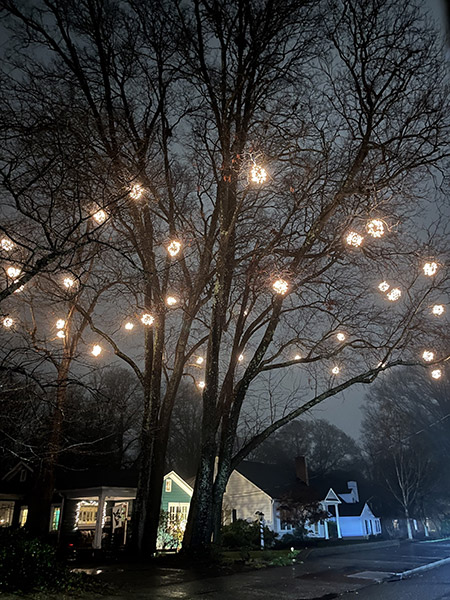
If you are interested, here is a short Materia Medica on European Mistletoe/Viscum Album (from thenaturopathicherbalist.com)
Part used: Whole herb (leaves & branches)
Constituents: Lectins (viscotoxins), Flavonoids, Acetylcholine & choline derivatives, alkaloids, polypeptide, polysaccharides, phenolic compounds: caffeic acid, syringin, eleutherosides, sterols: triterpenes, amines: histamine, tyramine
Actions: Antihypertensive, Sedative, Antitumour, Diuretic, Vasodilator, Antispasmodic, Anti-inflammatory, Immune enhancer
Medical uses:
- Primary hypertension – Used as an alternative to beta blockers in cases of side effects of the later
- Anxiety & panic attacks
- Insomnia
- Tinnitus
- Epilepsy
- Improves concentration
- In cancer treatment – can also kill cancer cells in animals or in vitro
- Inflammatory arthritis
- Diabetes – has been shown to help reduce symptoms in diabetic mice by stimulating insulin secretion from pancreas cells
- Cardiovascular Conditions: Open studies carried out using oral mistletoe have found it can reduce the symptoms of high blood pressure, particularly headaches and dizziness. German doctors generally agree with these findings; however, mistletoe has a small (if any) effect on actually lowering blood pressure. However, Dr. Murray has described Viscum as being cholinomimetic resulting in inhibition of the medullary vasomotor center
- Neoplastic Conditions: Numerous clinical trials have found that subcutaneous injections of mistletoe extracts can help people with cancer of various organs, though some have also failed to show any benefit. There is no evidence that giving mistletoe orally would benefit people with cancer.
Pharmacology:
- Most notable compounds are lectins (also called viscotoxins), choline derivatives, alkaloids, polypeptides, and polysaccharides. Have shown immune-stimulating activity in human studies when mistletoe extracts are given by injection.
- In regard to immune function, has a variety of effects including increased: macrophage phagocytic and cytotoxic function, neutrophil production, thymic weight, cortical thymocyte activity/proliferation, NK cell activity, IL-1, IL-6 &TNF induction
Pharmacy:
- Dried herb: 2-6 g TID
- Tincture (1:5, 45%), 1-3 ml TID, max dose 10 ml/week
- Fluid extract (1:1, 25%), .5 ml TID
- Other Preparations: Iscador: fermented juice, Eurixor: standardized to lectin 1, Lektinol
Contraindications: Pregnancy
Toxicity: Berries are highly poisonous
